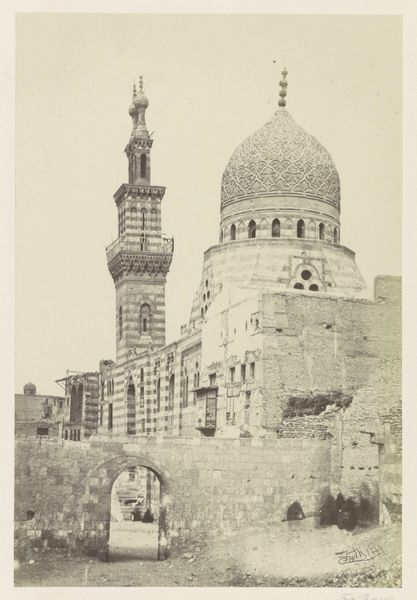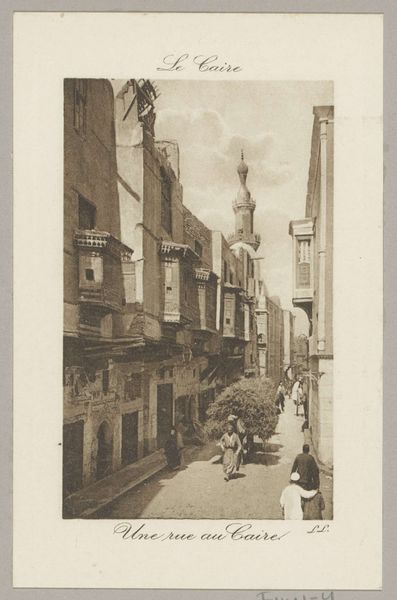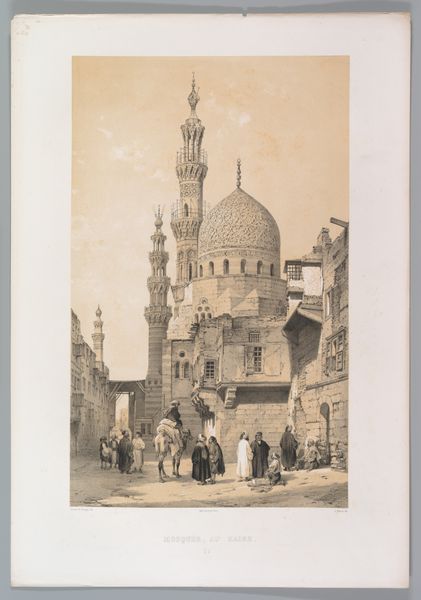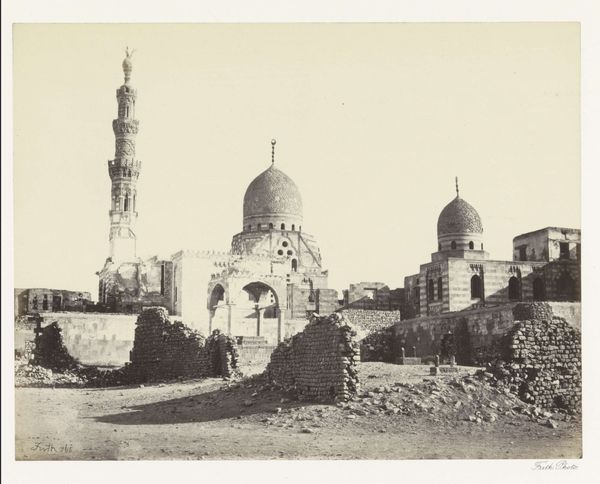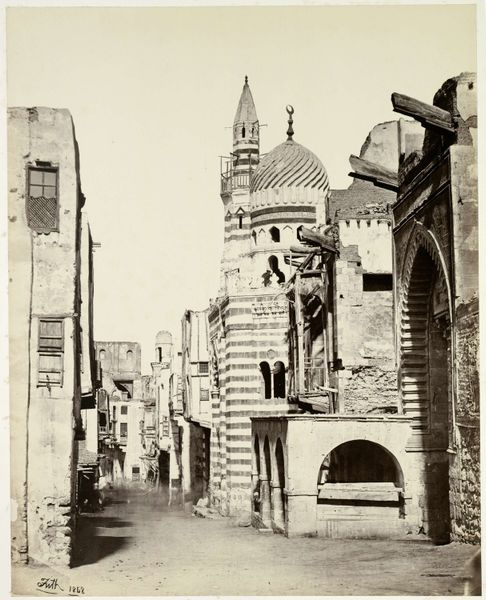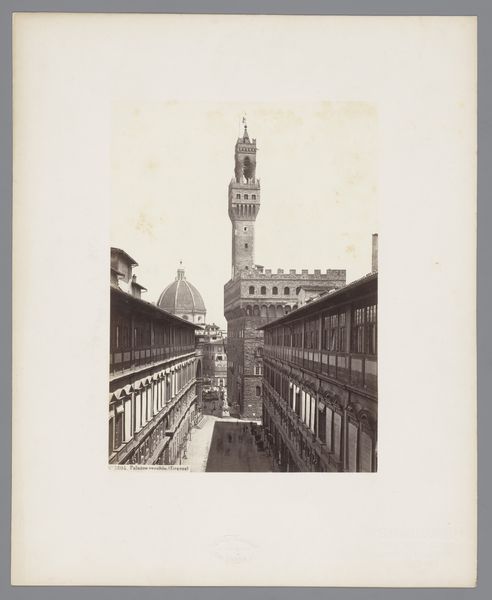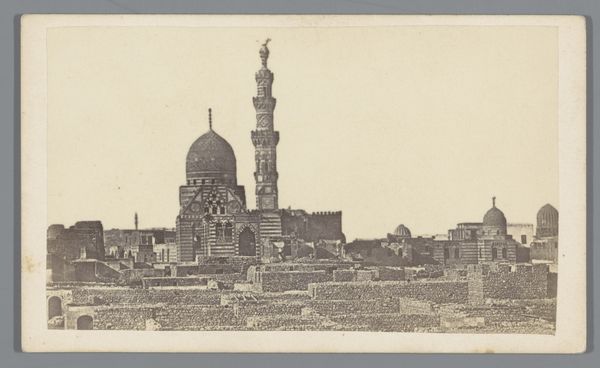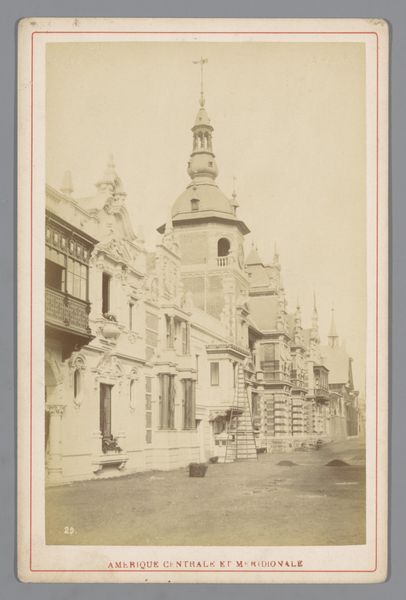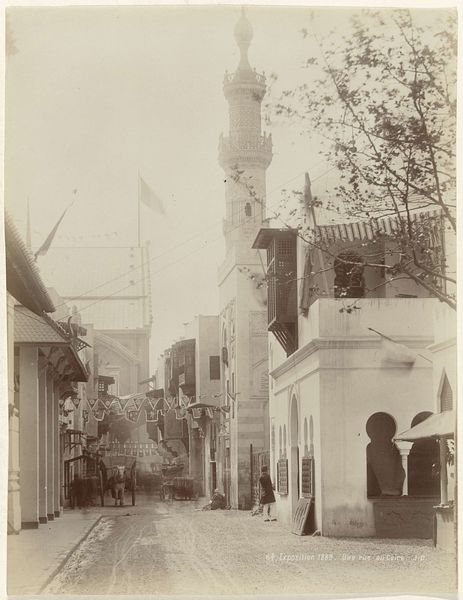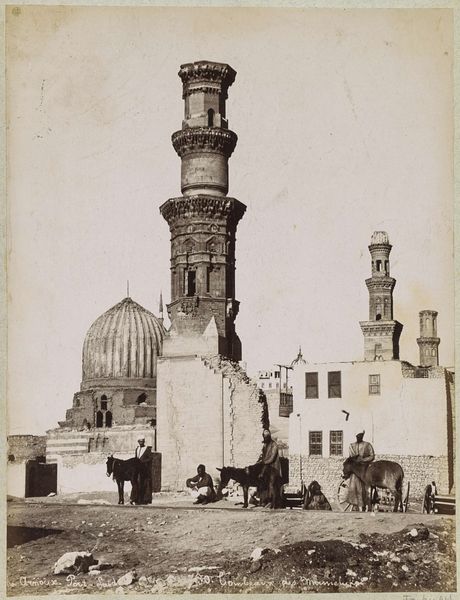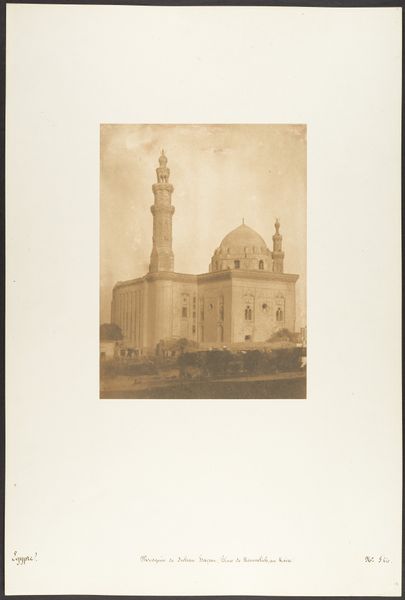
photography, gelatin-silver-print
#
landscape
#
street-photography
#
photography
#
orientalism
#
gelatin-silver-print
#
cityscape
#
islamic-art
Dimensions: height 139 mm, width 90 mm
Copyright: Rijks Museum: Open Domain
Editor: This photograph, “Blauwe moskee in Caïro,” or Blue Mosque in Cairo, captured before 1914, is a gelatin silver print held at the Rijksmuseum. The hazy sepia tones give it a real sense of history. What do you see when you look at this image? Curator: This piece offers a fascinating window into Orientalism and the West's fascination with the East. It's not simply a depiction of Islamic architecture but also a social document reflecting how early photography shaped perceptions of Cairo. Notice the strategic framing. Editor: How so? Curator: The photographer, LL, perhaps intentionally highlights the mosque within the context of a bustling city street. The carts and people add to this staged reality, almost like a tableau. What stories are being presented or, perhaps, even manufactured, about Cairo for a Western audience? Editor: So it’s about more than just the architecture itself? Curator: Absolutely. It encourages a critical look at how photography, particularly in the colonial era, participated in constructing narratives about "other" cultures. How might local Cairenes have viewed such depictions of their daily life? Consider also, how this image may have reinforced certain political powers at play at that time? Editor: That’s given me a lot to think about – seeing the photo as less of a snapshot and more of a constructed statement. Curator: Precisely. This image reminds us of the power of images to not only reflect, but actively shape our understanding of history and culture.
Comments
No comments
Be the first to comment and join the conversation on the ultimate creative platform.
